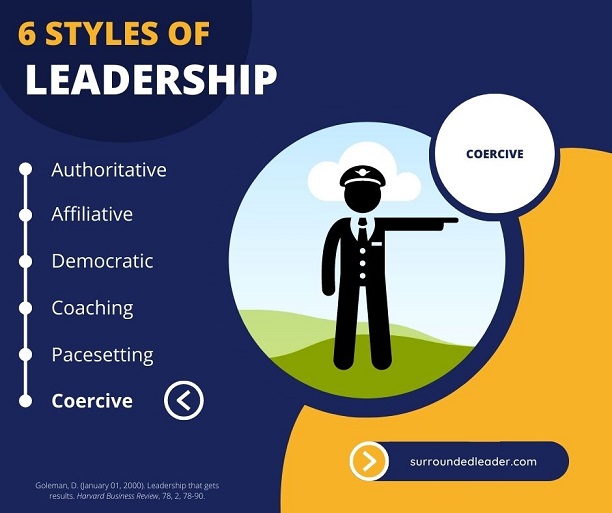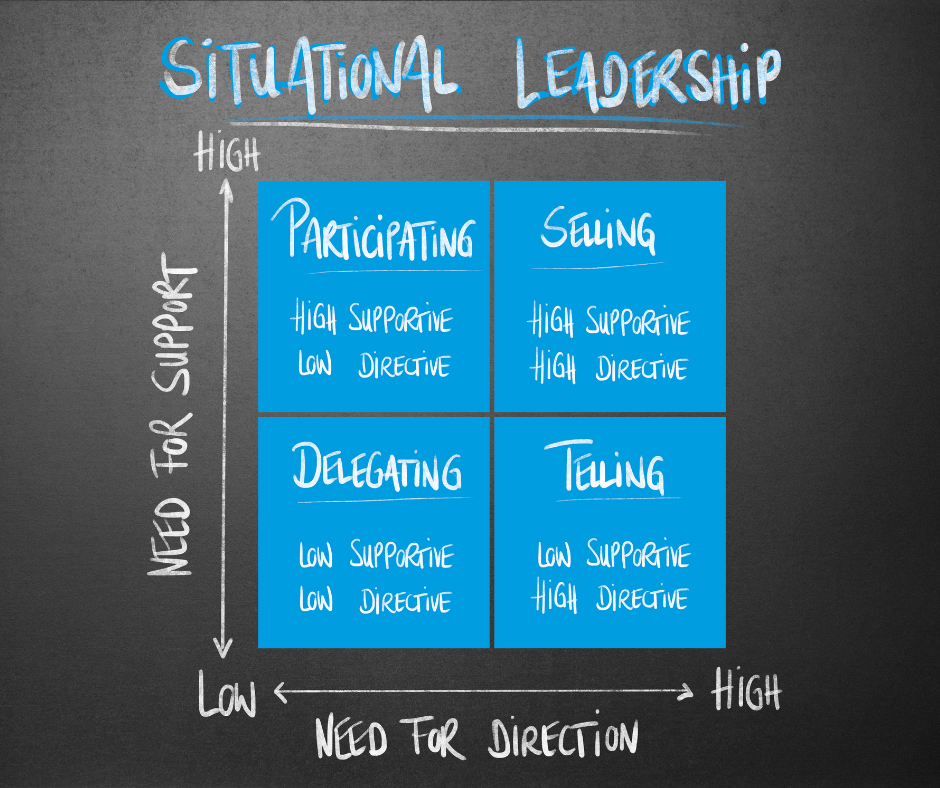The Oxford Dictionary defines coercive as “relating to or using force or threats.” When most of us started in leadership, we probably did not set out with the goal of becoming a dictator or a coercive leader. So why does coercive leadership have such a powerful pull?
Leadership Defined
Forbes contributor Kevin Kruse defines leadership as:
A process of social influence, which maximizes the efforts of others, towards the achievement of a goal.
While this definition is easy to put on paper, this process can be incredibly challenging. Others don’t always want to maximize their efforts.
Leadership In Practice
Leaders must produce results. We must produce results regardless of the willingness of those we lead. We are not only required to get results, but short timelines often accompany our goals.
As deadlines approach, coercive leadership subtly begins to pull us in. Newer leaders are especially susceptible to this seduction. As the pressure builds, we might search for faster methods to drive results. What would it hurt to use a bit of force or a threat as a motivational nudge? So we give it a try. To our astonishment, it works. It works well.
Daniel Goleman included coercive leadership in the six styles of “Leadership That Gets Results.” There is a reason. Coercive leadership is often the fastest way to achieve results. However, it comes at a cost.
While this fear base approach initially drives results, it is not sustainable. Those we lead will eventually become numb to our approach. It will require continually escalating to new levels to drive results. Each level of escalation erodes the foundation of trust in the leader.
Tragic Results
I read a recent headline, “Mother killed in a stabbing attack, 5-year-old daughter in critical condition.“
A sense of righteous indignation began to build in me.
As I continued reading, “Defensive wounds show 5-year-old girl fought attacker,” my blood began to boil.
The article suggests domestic violence led to the death of a mother of three and the attempted murder of her 5-year-old daughter.
It would be hard to find a person that would not eagerly condemn the act of violence described in the article I mentioned. Unfortunately, the path leaders take towards becoming coercive leaders are often the same steps taken by domestic violence (DV) perpetrators. While we may quickly judge a DV perpetrator or a savage dictator, we rarely give ourselves the same level of judgment when we begin to slip toward coercive leadership.
What Is Coercive Leadership?
Coercive leadership is a style where the leader has complete control. The coercive leader makes decisions with little or no input from those they lead. Essentially a coercive leader is a dictator. While varying degrees of brutality occur in coercive leaders, they all share the common trait of demanding absolute power and control.
The Danger of Coercive Leadership
Many write on the benefits and shortcomings of the coercive leadership style. I’m sorry, but I have to deviate from the trove of information presented on this topic. Highlighting the benefits of coercive leadership is like highlighting the benefits of substance abuse. The damage done while experiencing any “benefit” is so severe that I believe it is unethical to call it a benefit truly.
Coercive leadership can be dangerous in several ways:
1 – Coercive Leadership Is Addictive
Research shows that the chemical cocktail produced when we experience power over others can profoundly affect our bodies.
Columbia and Harvard University researchers Carney, Cuddy, and Yap provide evidence that even using power projecting poses can impact testosterone and cortisol levels. Both of these chemicals play an essential role in increasing levels of aggression.
Narvaes and Martins de Almeida suggest dopamine, the neurotransmitter associated with reward and pleasure, is elevated when an oppressor goes on the offense against a defensive foe. Aggressive behaviors also seem to alter serotonin, another component in the body’s reward system.
When you look at the combined impact of the various chemicals when we experience power over others, it is easy to see how power can become a dangerous addiction:
- Increased testosterone levels increase the potential for aggression.
- Decreased cortisol levels reduce the body’s ability to cope with stress effectively.
- Aggressive behaviors significantly impact dopamine and serotonin levels. They essentially produce a high similar to drug use or sweet foods.
- The body will crave the high delivered by aggression, but the repeated exposure will eventually decrease the brain’s sensitivity to the reward chemicals. As a result, the brain will now require higher and higher levels to receive the same reward level from their behavior.
2 – Coercive Leadership Initially Can Seem to Be Effective
While I’ve spent most of my career as a leader in a Fortune 500 tech company, I worked as a licensed domestic violence intervention counselor for a short time. During this time, I worked with almost 100 DV perpetrators. When asked why they resorted to abusive power and control, everyone responded: “it worked.”
Many perpetrators didn’t feel respected in many areas of their lives. It seemed to work the first time they used abusive power and control. Ultimately, they seemingly gained respect and the response they were hoping for. The next time, it worked again. It worked, but they also began to feel a high with every oppressive action.
Over time they began to lose respect, and the high wasn’t as strong as it once was. As a result, most perpetrators eventually escalate their abusive power and control to recapture the respect they craved and the aggression-fueled euphoria.
Unfortunately, this escalating cycle of abusive power and control can also show up in the workplace. With deadlines looming and stress rising, many leaders can take the enticing bait of coercive leadership. At first, this leadership style appears to provide the desired results. However, just like the destructive DV cycle, their level of dominance and aggression will need to continue to rise to achieve the expected results.
It’s clear to see that this destructive cycle is not sustainable. It will eventually destroy the leader and cause significant harm to everyone around them.
3 – Coercive Leaders Can Be Unaware of Their Impact
Another common trait of the DV perpetrators was to minimize their abusive behaviors. In our group sessions, we would ask the perpetrators to describe the circumstances that led to them joining our group. In almost every case, the perpetrators initially had difficulty seeing the severity of their actions. We found statements like “I guess the argument got a little physical” often translated to an unconscious victim.
While I would hope these levels of abuse would never find their way into the workplace, it is just as likely that coercive leaders will be unaware of the impact of their abusive leadership.
How to Avoid the Destructive Power of Coercive Leadership
While the seductive pull of coercive leadership is strong, it is avoidable.
Here are a few simple steps:
1 – Humble Yourself
Humility is one of the best antidotes to protect yourself and those you lead from the dangers of coercive leadership. When a leader can be vulnerable and ask for help in areas of weakness, it can neutralize many of the damaging effects of power addiction. In addition, leaders who humble themselves tune their neurological reward mechanism to crave collaborative success rather than domination.
2 – Listen to Others
For twenty-five years, you paid for my hands when you could have had my brain as well – for nothing.” (A middle-aged appliance worker at a Work-Out) – Jack Welch
A coercive leader minimizes the value of listening to others. The best leaders constantly look for ways they can learn. Often the simplest way to learn is to ask for others’ thoughts and opinions.
3 – Empower Others
Coercive leadership limits the organization’s success to the leader’s skills and abilities. John Maxwell calls this concept the law of the lid.
There is a linear relationship between the leader’s ability and the organization’s effectiveness. When we empower others, simple addition no longer defines our leadership efforts. Empowerment multiplies effort.
4 – Surround Yourself with Others That Challenge You.
Good leadership requires you to surround yourself with people of diverse perspectives who can disagree with you without fear of retaliation.” – Doris Kearns Goodwin, Team of Rivals
Creating a culture where leaders welcome opinions that differ from their own is another powerful antidote against coercive leadership. President Lincoln modeled this approach. He built his leadership team with his rivals, those he knew would challenge him.
Surrounding ourselves with rivals isn’t always required. However, we need to foster an environment where any member of our organization is welcome to challenge us.
Business is built by those who care—care enough to disagree, fight it out to a finish, get facts. When two men always agree, one of them is unnecessary.” – William Wrigley Jr.
Coercive leadership may seem like a legitimate leadership style in some situations. However, in almost every case, the supposed short-term benefits are never worth the devastating long-term effects. As leaders, we can protect ourselves from this seduction by humbling ourselves, listening to others, empowering others, and surrounding ourselves with those that will challenge us.
Are you ready to get started developing your leadership style? Learn more here.




